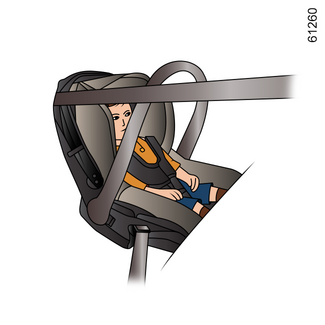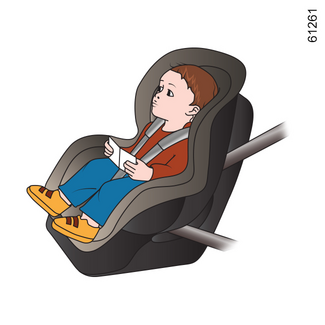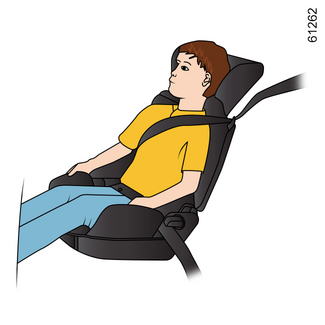Choosing a child seat
Choosing a child seat
Rear-facing child seats

A baby’s head is, proportionally, heavier than that of an adult and its neck is very
fragile. Transport the child in this position as long as possible (until the age of
2 at the very least). It supports both the head and the neck.
Choose a bucket type seat for best side protection and change it as soon as the child’s
head is higher than the shell.
Forward-facing child seats

Up to 18 kg or 4 years, the child may travel on a forward-facing seat. Choose your
seat according the child's size: their head and abdomen are the areas which must be
most protected. A forward-facing child seat which is firmly attached to the vehicle
will reduce the risk of impact to the head. Ensure your child travels in a forward-facing
seat with a harness for as long as their size permits.
Choose a bucket type seat for optimum side protection.w
Booster cushions

From 15 kg or 4 years, the child can travel using a booster seat, which will enable
the seat belt to be adapted to suit his size and shape. The booster seat cushion must
be fitted with guides to position the seat belt on the child’s thighs rather than
the stomach. It is recommended that you use a seatback which can be adjusted in terms
of height to position the seat belt in the centre of the shoulder. It must never rest
on the neck or on the arm.
Choose a bucket type seat for optimum side protection.w